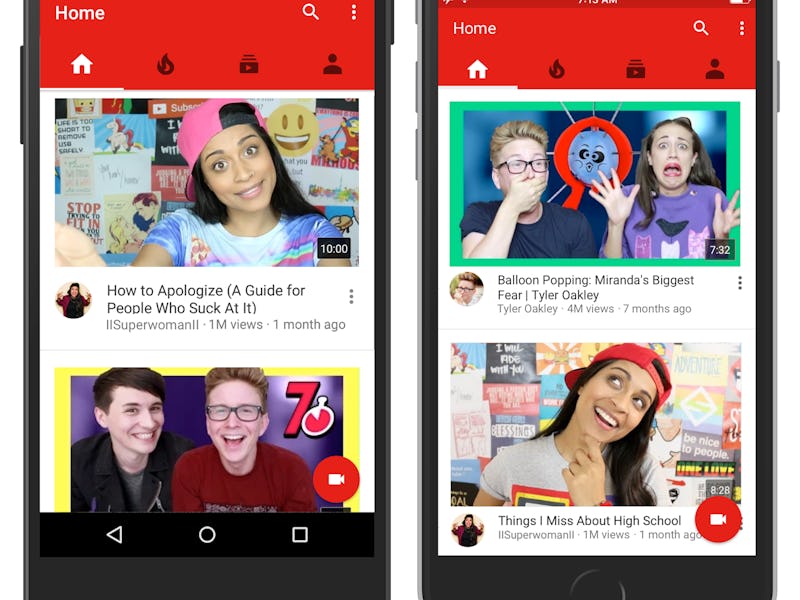YouTube's Deep Learning Video Suggestions Will Prevent Unwanted Rabbit Hole Tumbles
You'll never again see a YouTube video you don't like (theoretically).

YouTube’s mobile app became a little smarter today, and it will continue to get a little smarter every day from now on.
A new redesign promises personalized video recommendations based upon deep neural network technology. The artificial learning system will gather and find patterns in each YouTube user’s video choices and then recommend videos that are similar. The system gets better at identifying videos correctly each time it chooses a video the user likes.
Translation: You’re going to be seeing more of the same (and more of what you like) when it comes to your recommended video line up.
How YouTube’s deep learning works
Deep learning has become a popular topic of conversation in A.I. and tech communities, and YouTube’s parent company Google is oftentimes leading that conversation. Google currently uses it for things like voice recognition and identifying objects in Google Photos. It’s not an overly technical concept (a Google research scientist even taught a free Udacity deep learning course), but it is eventually going to take over how computers operate.
The YouTube announcement suggests this video to understand the system that will be deciding which videos you watch in the future:
Essentially, software engineers are writing programs that learn how to solve problems rather than writing programs that just solve problems. Digital neurons comparable to neurons in the human brain work together to figure out what something is. The next time the neural network comes across a similar object, it can recognize that object. Computers can’t learn as fast as humans, but having a sample size as large as YouTube’s helps.
What this means for you
“Every day, we recommend hundreds of millions of different videos on Home, billions of times, in 76 languages,” reads YouTube’s blog announcement.
YouTube states that the average viewing session on mobile is more than 40 minutes, and mobile makes up more than half of YouTube’s hundreds of millions of hours watched every day. Clearly, anything that reaches that amount of people has some heavy influence on how people think and what they think about.
On one hand, the deep neural network system can create a feeling of homogeneity. Confirmation bias can run rampant, and people will only watch more and more of the same type of videos promoting the same ideas. Other viewpoints will become sectioned off, and tight-knit communities will lose a wider perspective.
Of course, that’s a worst case scenario. Once that digital neural network learns all your likes and dislikes, it’ll be a lot easier to stay on the fun side of YouTube and a lot harder to get to that WTF part of YouTube.